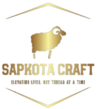Introduction
Felt is a versatile and timeless material that has been cherished for centuries, not only for its unique texture but also for its remarkable qualities. From cozy hats and stylish bags to eco-friendly home décor, felted items have become increasingly popular in the global market. However, the true magic of felt goes beyond its aesthetic appeal; it empowers women around the world by creating employment opportunities, promoting sustainable practices, and supporting local communities. In this blog post, we’ll explore the enchanting world of felt products and their growing demand in the global market while shedding light on the important role they play in empowering women.
The Beauty of Felt
Felt is a non-woven fabric that is made by compressing and matting fibers together. It can be crafted from various materials, including wool, alpaca, and synthetic fibers. This ancient textile art form offers a wide array of creative possibilities, from intricate sculptures to everyday accessories. The process of felting involves the application of moisture, heat, and pressure to the fibers, which causes them to interlock and form a sturdy, seamless fabric. This process makes felt incredibly durable, insulating, and eco-friendly, making it the perfect choice for a range of products.
The Global Demand for Felt Products
Over the years, the demand for felt products has surged worldwide. Consumers are increasingly seeking unique, sustainable, and artisanal items, and felt checks all these boxes. The appeal of felt lies in its inherent qualities:
- Sustainability: Felt production is environmentally friendly, as it requires minimal resources and produces little waste. It’s biodegradable and can be recycled, reducing its environmental footprint.
- Durability: Felt products are known for their longevity, offering great value for money. Whether it’s a felted bag or a cozy pair of slippers, these items are built to last.
- Versatility: Felt can be molded into an array of shapes and styles, making it suitable for a wide range of products. This versatility has driven its popularity in the market.
- Handcrafted Charm: Each felted item is a unique creation, often handcrafted by skilled artisans. This individual touch adds to its appeal.
The Impact on Women’s Empowerment
One of the most significant aspects of the felt industry is its positive impact on women’s empowerment, especially in rural and underprivileged communities. Women have played a pivotal role in the resurgence of traditional felting techniques, both as crafters and entrepreneurs. Here’s how the felt industry is creating employment opportunities and fostering economic independence for women:
- Skill Development: Many women in developing countries are trained in the art of felting, providing them with valuable skills that are in high demand in the global market.
- Income Generation: By creating and selling felt products, women can generate income for themselves and their families, breaking the cycle of poverty.
- Entrepreneurship: Felt crafting has allowed women to start their own businesses, either individually or collectively, giving them a sense of ownership and control over their economic destinies.
- Community Building: Felt cooperatives and workshops often provide a supportive community where women can exchange ideas, collaborate, and share their experiences.
Conclusion
The growing demand for felt products in the global market is not just a testament to the material’s charm and versatility but also a nod to its potential for positive change. Felt empowers women by providing them with skills, income, and a sense of purpose. It promotes sustainable and eco-friendly practices while offering consumers unique, handmade items that tell a story. As you consider your next purchase, think about the women behind the felt products you adore, and how your choice can contribute to their empowerment and the preservation of a remarkable craft. Felt is not just a fabric; it’s a symbol of creativity, sustainability, and women’s strength.
